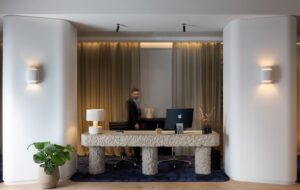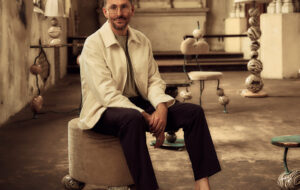|
(image: Instituto Moreira Salles; Iwan Baan) |
||
|
Two beautiful books document the construction of Brasília and the life of its inhabitants Brasília turned 50 in 2010. The Brazilian capital’s golden jubilee has, perhaps predictably, proved a bonanza for fans of architectural photography, prompting two superb monographs. First up is Living With Modernity, in which Iwan Baan twins Oscar Niemeyer and Lucio Costa’s Brasília with Chandigarh, Le Corbusier’s capital city for the state of Punjab in India. But these extraordinary planned cities are not so much the subject of Living With Modernity as they are the backdrop. Architectural photography is often accused of leaving out people, turning built works into abstract art, an argument that gets rolled into the whole “modern architecture is dehumanising” routine. This is mostly unfair. The depopulation of many architectural images is more likely a product of the formal requirements of magazine editors and designers rather than the kinks of the photographer or the architect. Baan, probably the most celebrated architecture photographer of his generation, is here on his own brief, and has produced a book specifically focused on the inhabitants of these amazing places. The result is a book combining considerable formal beauty with a great deal of lively informal interest. For my money, the Indian images are particularly fine. The peculiarly ancient-and-modern quality of Le Corbusier’s sensual later buildings suits, for example, a Dickensian legal office, literally stuffed with yellowing bundles of paper, or a group of gentlemen doing laundry. The human focus gives some of the compositions a slightly distracting overtone of “Where’s Wally” – “There he is! Skimming leaves out of that ornamental pool! There’s the person!” – but broadly there’s a relaxed and celebratory air to the book. This seems a surprise to Cees Nooteboom, who in the lyrical accompanying essay writes: “They treat their cities just as people have done for centuries. It makes no difference that their hometown was created from nothing …” Well, why not? Should they feel differently? If you do need proof that a utopian, modernist planned city can be inhabited quite normally – that you aren’t obliged to strut around in a toga or a unitard pretending to be a Nietzschean superman – this book is proof. Otherwise it is simply a delightful book that will be retrieved from your shelves again and again. The title is a curious choice: Living With Modernity. Living With Modernism, surely? Brasília and Chandigarh are twin summits within modernism. But they are, for better or worse, aberrations in the landscape of modernity. Modernity is informal slum dwellings with satellite television but no fresh water supply; it’s curtain-wall skyscrapers with roofs tiled like pagodas. Mumbai and Sao Paulo are more representative of modernity than Chandigarh and Brasília. There are plenty of people in Marcel Gautherot’s photographs of the construction of Brasília, given their own volume for the first time in Building Brasília. Breathtaking, utopian shots of the city on the grow are complemented by portraits of the workers responsible and their extremely modest dwellings. This isn’t social criticism – it’s a statement about the democratic nature of the endeavour, during which even the president was camped out in a basic dormitory. It’s hard to imagine any of our leaders kipping in a Portacabin on the Olympic site. But of course it’s the fantastical images of the city taking on its form that really hold the attention. The aeroplane-shaped layout is scratched into the scrub; ghostly steel frames rise out of a bath of dust; workers fuss over the exposed rebar of a concrete dome like bees on a honeycomb. The haunting, hallucinatory quality of Gautherot’s photographs gives them the patina of science fiction, even after half a century. Building Brasilia could be a look at a lost Chris Marker film about a CIAM mission to Mars. Modernism still has a grip on the future, even if it has lost its monopoly on modernity. Photography curator Sergio Burgi provides a sketch of Gautherot’s fascinating life. Kenneth Frampton fills in the historical background and gives some context for the images. Given all this visionary power, Frampton could have let a bit more blood run to his accompanying essay. Instead he tells the story of South America’s greatest work of architecture (and probably its greatest work of art) with all the passion of a sales clerk outlining the advantages of a particular brand of tumble dryer. Living With Modernity (2010). Photographs by Iwan Baan. Lars Muller. £40. Building Brasilia (2010). Photographs by Marcel Gautherot. Thames & Hudson. £39.95.
|
Words William Wiles |
|
|
||



















